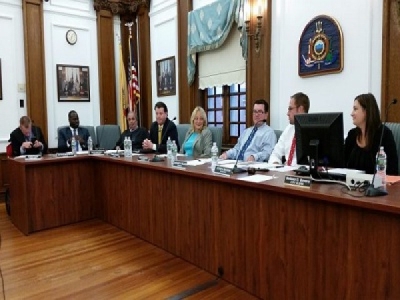
Posted on September 27, 2016
By Donald Wittkowski, CCNJDaily
Since starting work in September, Ocean City has already completed two of the three dredging projects scheduled this year as part of a multimillion-dollar program to clear out lagoons and channels choked with muddy sediment, a top city official said Thursday night.
Bayfront dredging work at Snug Harbor between Eighth and Ninth streets has wrapped up. Another dredging project at Glen Cove between 10th and 11th streets is expected to be finished on Friday, Business Administrator Jim Mallon told City Council.
With those two projects now done, the dredging contractor will begin work during the first week of October at the entrance of South Harbor, a bayfront community between Tennessee Avenue and Spruce Road, Mallon reported.
“We’re moving,” Mallon said of the multifaceted work completed so far.
Snug Harbor, Glen Cove and South Harbor are the three areas the city has targeted for $10 million worth of dredging this year. Mayor Jay Gillian has proposed spending an additional $5 million in 2017 and another $5 million in 2018 as part of a program to unclog the shallow lagoons and channels along the back bays from one end of the island to the other.
“This is a whole multiyear, multimillion-dollar project that we’re undertaking,” Mallon told reporters after the City Council meeting Thursday.
Mallon, in a report to Council, detailed progress on other projects that are crucial for the dredging program’s overall success.
In order to undertake a long-term strategy for unclogging the lagoons, the city must empty out a disposal site where the dredge spoils are stored temporarily before they are hauled off by trucks to a Wildwood landfill.
Known as Site 83, the disposal area near the 34th Street Bridge can hold about 300,000 cubic yards of dredge material. Mallon said construction has been completed on a new temporary roadway that will allow more trucks to serve the disposal site, speeding up the removal of dredge spoils to the Wildwood landfill.
Completion of the road project had been delayed because part of the road was sinking in the soft soil of the marshlands. Mallon explained that the road was reconfigured around the sinking section to finish the work.
Mallon estimated that trucks will begin hauling dredge spoils out of Site 83 in a few weeks. He and Gillian toured the disposal site on Wednesday and came away pleased with the progress of the work, Mallon said.
The construction contractor has also done some cleanup work and repairs at Site 83 to satisfy the demands of the environmental regulatory agencies, Mallon stated.
Site 83 will be the centerpiece of the city’s dredging projects in 2017. A much-smaller disposal site underneath the Ninth Street Bridge-Route 52 Causeway has been handling dredge spoils this year.
ACT Engineering, a consulting firm that is overseeing the dredging program for the city, has said the state and federal environmental permits for the temporary road at Site 83 are scheduled to expire next June. The city plans to seek an extension of the permits to continue using the roadway throughout 2017 and beyond.
The process for removing the soup-like sediment from the lagoons and channels is both tedious and expensive. The bayfront is being cleaned out because boaters often can’t navigate through the shallow waterways. They have repeatedly complained that their boats scrape bottom or are trapped at the docks, particularly during low tide.
Residents will be able to piggyback on the city’s permit to dredge their own boat slips. The city is not requiring residents to dredge their slips, so it will be an individual choice by the property owners, according to ACT Engineering.
Previously, the mayor estimated that about 1 million cubic yards of silt must be dredged from the bayfront, the equivalent of 15 football stadiums filled with muck and mire. ACT Engineering has said at least 700,000 to 800,000 cubic yards of sediment must be extracted.
Gillian has warned that property values could decline, taxes could go up and the marinas and other bayfront businesses could disappear if the city did not embark on such an extensive dredging program.
Deeper lagoons will also help the city in its efforts to improve drainage in flood-prone neighborhoods, Gillian has said. Dredging, drainage and roadway projects are among the big-ticket items in the city’s five-year, $98.5 million capital plan proposed by the mayor.
Source: CCNJDaily





